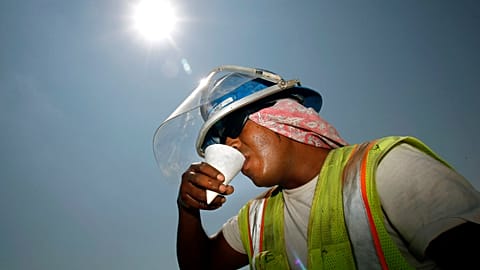Researchers analysed how daily versus weekly data can underestimate excess deaths due to heat-related mortality.
High temperatures in 2022 may be responsible for 70,000 excess deaths in Europe, according to a new study.
Researchers at the Barcelona Institute for Global Health (ISGlobal) revised initial estimates of heat-related mortality for summer 2022 in a new analysis published in The Lancet Regional Health - Europe journal.
According to Copernicus, the EU’s earth observation programme, 2022 was the second hottest year on record in Europe. It was around 0.9 C above average, with summer temperatures in Europe at 1.4 C above average.
ISGlobal and Inserm scientists previously had estimated that more than 61,000 people died in the 2022 summer heatwaves with Italy the EU country most impacted. They have revised their estimate after developing a new framework for measuring heat-related mortality.
Model based on daily temperatures and mortality
The new framework was based on daily temperatures and mortality records from 147 regions in 16 European countries and allowed them to revise their calculations for 2022 based on historical data.
They said that their previous estimate, which was based on weekly data, underestimated the deaths by 10.28 per cent.
The scientists found that weekly, bi-weekly, and monthly data models underestimated both temperature-related mortality compared with a model based on daily figures.
Over longer time periods, the underestimations were more dramatic.
“If there is a heat wave today or an episode of very high temperatures, we see systematically an increase in mortality the same day and then the following days up to 7 to 10 days,” Joan Ballester Claramunt, a researcher at ISGlobal and study author, told Euronews Next.
“So when we use these weekly data sets, which are aggregates of daily mortalities and averages of daily temperatures, [we are] simplifying this delayed association between daily temperature and daily mortality, and when we do that we tend to underestimate the effects of heat,” he added.
Compiling daily data of temperatures and mortality is currently a “titanic effort” that can take years, Ballester said, arguing that the European Union should coordinate these data sets to boost European research.
More heat-related deaths projected
The World Meteorological Organization (WMO) and Copernicus said in a joint report earlier this year that Europe is the fastest-warming continent in the world, warming twice as much as the global average since the 1980s.
“The record-breaking heat stress that Europeans experienced in 2022 was one of the main drivers of weather-related excess deaths in Europe,” said Dr Carlo Buontempo, the director of the Copernicus Climate Change Service in a June statement, adding that it is not a one-off occurrence.
“Our current understanding of the climate system and its evolution informs us that these kinds of events are part of a pattern that will make heat stress extremes more frequent and more intense across the region,” he added.
Researchers at ISGlobal and Inserm said in July that the European continent will face an average of more than 68,000 heat-related excess deaths each summer by 2030 and more than 94,000 by 2040 unless there is an effective response to climate change.
Ballester said that while researchers can “project future temperatures and temperature-related mortalities, [the future] depends on our actions”.
Through mitigation, “we can decrease greenhouse gas emissions and reduce the increase in temperatures,” while through adaptation, governments can take several actions, including closer surveillance of people with comorbidities at risk of heat-related death and better forecasting tools and early warning systems.
There are “improvements in the quality of houses, the insulation, ventilation and also a more clever design of cities. These among many others are tools at various different levels that could be implemented to reduce to increase resilience and reduce the impacts,” Ballester said.


















